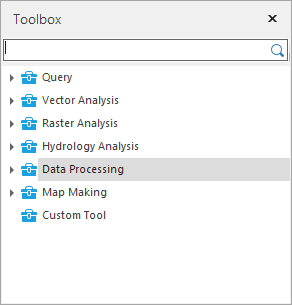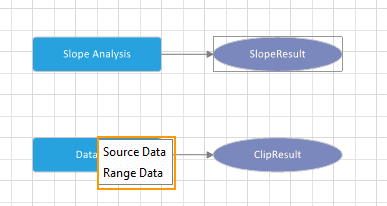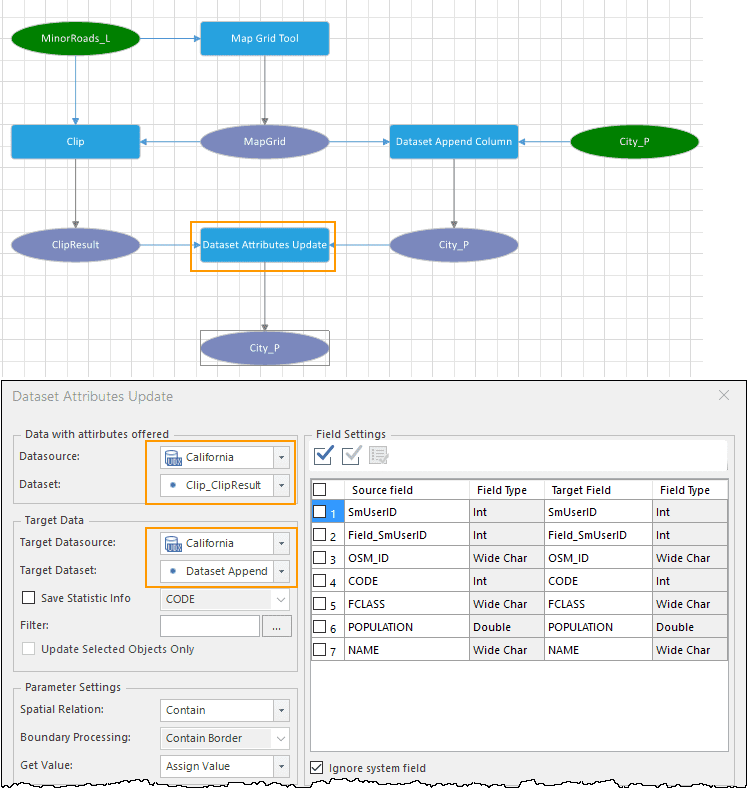Model
A model is a graphic representation of a series of tools. It can intuitively show all operations that the geoprocessing modeler will perform and corresponding connections.
Toolbox
Toolbox provides all kinds of tools for processing and analyzing data. At present, 6 classes of tools are contained in the toolbox, and you can customize tools through Python as needed.
Tools can be run in the background. Therefore, you can perform other operations at the same time. For example, when you are performing a slope analysis model, you still can browse data or maps.
- Search : The Search box in the Toolbox allows you to search for tools in the tool box by entering key words, which can help you find the required tool quickly.
Tool
A tool is an essential element for modeling. Adding a tool comes up with parameter settings.
- Input : You can specify the input data through the following three ways:
Way 1, open the parameter panel. Specify a dataset in the current workspace as the input data.
Way 2, take the output data of a tool as the input data. But you need to join the two tools first.
Way 3, add a data node.
Data Node : It is an input-data node. You can select any dataset in the current workspace as the input data. The advantages of adding a data node are:
- Connect multiple tools with the same data once without specifying the data many times.
- The tool parameters are displayed as data variables make each model much easier to check and understand, thereby improving readability.
- Output : the output of each tool. You can do some settings like the name of the resulting dataset in the parameter panel.
- Functional parameters : All paramters in the toolbox except the input paramter and the output paramter.
Join
Joining two tools is to establish a logical relationship and a parameter connection between them. The logical relationship is that the second tool will be performed once the first tool is finished. The parameter connection is that the output of the first tool will be used for the second tool.
Virtual data
When building a model, some tool needs data which hasn’t been generated yet. This kind of data can be recognized by iDesktop as virtual data. This way ensures that you can build a model successfully. For example, the tool Dataset Attribute Update in the following figure needs data that will be generated by both the tool Clip and the tool Dataset Append Column.




